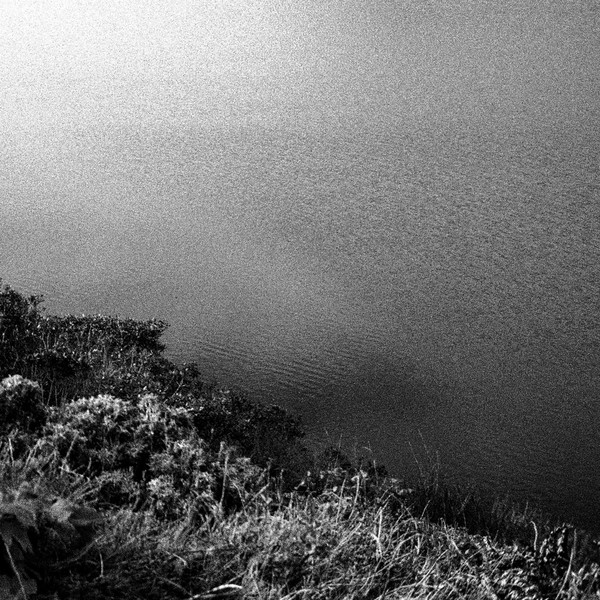
 |
|
 |
Format: LP Label & Cat.Number: Room40 - RM4123 Release Year: 2020 Note: three immersive, acoustic pieces by the "Long String Instrument" (installation of over forty strings spanning seventy feet in length) inventor and performer ELLEN FULLMAN, with THERESA WONG on electronically processed Cello, creating rich resonances and extended drone harmonics... all inspired by the eternal exchange of "bodies of water"... wonderful drone music full of shimmering and shifting tones and colours..
Price (incl. 19% VAT): €26.00 More Info"Harbors is a collaboration of composers Ellen Fullman (Long String Instrument) and Theresa Wong (cello), which draws inspiration from the soundscapes, stories and atmospheres that manifest around bodies of water that propagate exchange. Structured around the extended harmonics of the open strings of the cello, Wong and Fullman utilize subsets of these tonal areas to create distinct sonic environments within the piece.Fullman’s Long String Instrument, a stunning installation of over forty strings spanning seventy feet in length, places the performers and audience inside the actual resonating body, transforming the architecture itself into the musical instrument. Wong has developed techniques that take the cello beyond tradition into a vocabulary more closely rooted in the sounds of the natural world. She captures material electronically, layering textures amplified throughout the space which form an immersive field where figure and ground are in constant flux. The piece reveals an orchestration of shifting drones, aberrant melodies and glistening atmospheres. Harbors has reverberated many spaces around the world, including: Click Festival, Helsingør, Denmark; Transformer Station, Cleveland; MONA FOMA, Tasmania; Centennial Hall, Sydney Festival; The Lab, San Francisco; and Museum of Contemporary Art Detroit. Harbors was inspired by the foggy San Francisco bay during our residency at the Headlands Center for the Arts. Special thanks to all of the curators and producers who presented this work as we developed it through performance: Georg Rasmussen, Click Festival, Elsinore, Denmark (2015); Tom Welsh, Cleveland Museum of Art, Transformer Station (2015); Dena Beard, The Lab, San Francisco (2016); Shelly De Vito and James Porter, Les Moulins de Paillard, Poncé-sur-le-Loir (2016); Wendy Coutau and Anny Serrati, Dampfzentral, Bern, and ARCOOP, Geneva (2016); Kerry O’Brien, Nief-Norf Summer Festival, Knoxville (2017); Lawrence English, Australia tour, Sydney Festival, MONA FOMA, and the Substation Melbourne (2017). Special thanks to Perrin Meyer and Meyer Sound for the loan of a sound system for our recording session in Berkeley (2018)." https://room40.bandcamp.com/album/harbors "Harbors is an entity on which Ellen Fullman (long string instrument) and Theresa Wong (cello) worked for years in varying live settings before putting it on record. It requires nothing but being genuinely involved, joining the experience in psychophysical completeness. It’s not the kind of recording where one elects to “list” the unfolding events, although this is feasible. Rather, a tangible illustration of the potential of vibrating strings to remove what is superfluous, possibly harmful, from a brain overburdened with illusions and anxieties engendered by the grandiloquence of the self. The first and longest segment immediately discloses the impressive cohesion of the elements. Fullman and Wong find answers to the questions posed by the room they’re playing in without any preconception, just confident in the propagating reverberation filling the rational gap in the best possible way. Certain traits are remotely reminiscent of Stephen Scott’s exploitation of piano innards (circa Minerva’s Web), the duo’s consciousness hovering over continuous harmonic shifts and fluctuating dimensionalities. The alliance between the upper partials of Wong’s cello and Fullman’s extended drones creates an impossible-to-detail polyphony, partly nourished by the poco cantabile linearity of some of its components. In the end we hear the whole oscillating in peculiar fashion, sort of an alien lullaby vanishing into nothingness. As the second movement begins, the cello greets us with distinct glissandi in the lower regions of the tone gamut; imagine the skin of a large drum artfully pressed when hit in order to alter intensity and pitch. Diverse dynamics are produced by plucking the strings and, in Wong’s case, using the bow for brief arpeggiated outbursts. The mood is somewhat uncertain but there is never any doubt about the persistence of an insightful reciprocation inside the sympathetic environment. The third part confirms and synthesizes the nuances of previously investigated acoustic spaces: the might of strident pseudo-staticity, the parallelism of auricular reactions and absolute calmness, the spontaneous blossoming of outstanding contrapuntal flowers. Having reached this point, experienced listeners no longer need to ask what is going on. They have already understood, quivering cores acknowledging the Sound." [Touching Extremes] |
| © 2007 Drone Records | | Celler Strasse 33, 28205 Bremen, Germany | Privacy and cookies policy | Impressum / Allgemeine Geschaftsbedingungen / Haftungsausschluss | Links to the scene |